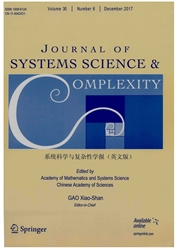

 中文摘要:
中文摘要:
因为传播有害谣言能深深地危及一个社会,调查能高效地阻止危险谣言繁殖的策略是珍贵的。为了进行这调查,作者修改 SIR 模型在网络上描述谣言繁殖,并且使用二主要免疫策略,也就是,到谣言的随机的免疫和指向的免疫在一个小世界的网络上当模特儿。作者发现当网络的平均的度是小的时,两二策略是有效的,当平均的度大时,任何一策略都不在阻止谣言繁殖是有效的。在后者案例中,作者由减少建议新策略谣言和适用的任何一个的可靠随机或指向的免疫同时。数字模拟显示这策略在阻止谣言与大平均的度在小世界的网络上传播是有效的。
 英文摘要:
英文摘要:
Since the spreading of harmful rumors can deeply endanger a society, it is valuable to investigate strategies that can efficiently prevent hazardous rumor propagation. To conduct this investigation, the authors modify the SIR model to describe rumor propagation on networks, and apply two major immunization strategies, namely, the random immunization and the targeted immunization to the rumor model on a small-world network. The authors find that when the average degree of the network is small, both two strategies are effective and when the average degree is large, neither strategy is efficient in preventing rumor propagation. In the latter case, the authors propose a new strategy by decreasing the credibility of the rumor and applying either the random or the targeted immunization at the same time. Numerical simulations indicate that this strategy is effective in preventing rumor spreading on the small-world network with large average degree.
 同期刊论文项目
同期刊论文项目
 同项目期刊论文
同项目期刊论文
 期刊信息
期刊信息
